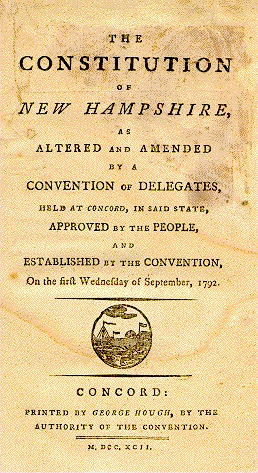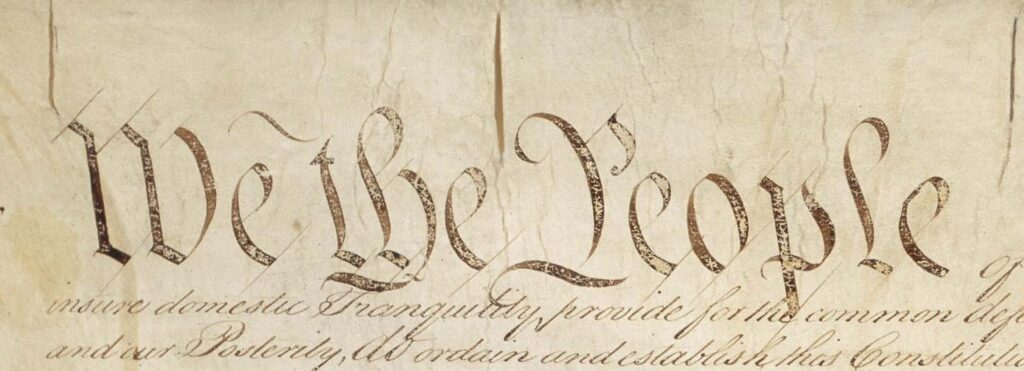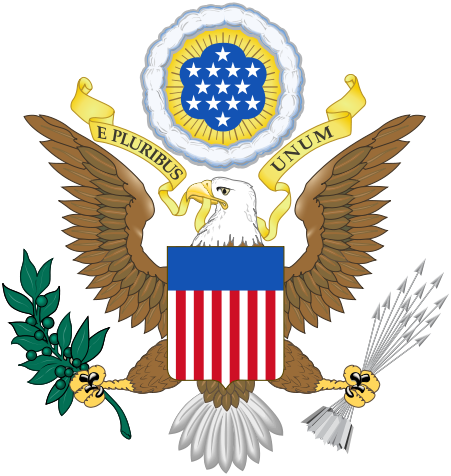
Designing New Systems of Government
Designing New Systems of Government

The United States was the first modern nation to self-consciously design systems of government reflecting certain fundamental philosophical principles. After the country declared independence in 1776, many states drew up new constitutions that embodied republican ideals.
A basic goal of the new state constitutions was to curb the kinds of abuses that provoked the Revolution. The British had lacked a written constitution; many Americans felt that a written constitution would be harder to violate. To keep state governments from abusing their power, the state constitutions included a bill of rights, which guaranteed certain elemental rights that government could not infringe, such as freedom of the press, freedom of religion, and the right to trial by jury.
The new state constitutions also curbed executive power. Two states—Georgia and Pennsylvania—eliminated the position of governor altogether. The other states prohibited governors from vetoing laws, dissolving the state legislature, granting land, and sharply limited their power to appoint government officials.
As a symbol that the new state constitutions reflected the sovereignty of the people, the documents were typically drafted by special constitutional conventions rather than by state legislatures. The constitutions were then submitted to the people for approval. The new state constitutions gave the legislature the most governmental power precisely because legislative assemblies had actively resisted attempts by royal governors and the king’s ministers to violate their rights. But because they feared giving too much power to any one governmental body, all the states except Georgia and Pennsylvania divided the state legislature into two branches.

History Through…
…Primary Sources
Read the New Hampshire Declaration of Rights and Plan of Government.
New Hampshire, A Declaration of Rights, and Plan of Government for the State of New-Hampshire, 1779
Whereas by the tyrannical Administration of the Government of the King and Parliament of Great Britain, this State of New Hampshire with the other United States of America, have been necessitated to reject the British Government and Declare themselves Independent States; all of which is more largely set for the Continental Congress in their Resolution and Declaration of the fourth of July A.D. 1776.
And Whereas it is recommended by the said Continental Congress to each and every of the said United States to establish a form of government most conducive to the welfare thereof. We the Delegates of the said State of New Hampshire chosen for the purpose of forming a permanent plan of Government subject to the review of our Constitutions have composed the following Declaration of Rights, and Plan of Government, and recommend the same to our Constituents for the Approbation.
First, We declare that we the People of the State of New Hampshire are Free and Independent of the Crown of Great Britain.
Secondly. We the People of this State, are entitled to Life, Liberty, and Property; and all other Immunities and Privileges which we heretofore enjoyed.
Thirdly. The common and Statute Laws of England, adopted and used here, and the Law of this State (not inconsistent with the Declaration of Independence) now are, and shall be in force here for the Welfare and good Government of the State, unless the same shall be repealed or altered by the future Legislature thereof.
Fourthly. The whole and entire Power of Government of this States is vested in, and must be derived from the People whereof, and from no other Source whatsoever.
Fifthly. The future Legislature of this State, shall make no Laws to infringe the Rights of Conscience, or any other of the natural unalienable Rights of Men, or Contrary to the Laws of God, or against the Protestant Religion.
Sixthly. The Extent of Territory of this State is, and shall be the same which was under the Government of the late Governor John Wentworth, Esq. Governor of New Hampshire. Reserving nevertheless our claim to the New Hampshire Grants, to…the West of the Connecticut River [Vermont].
Seventhly, The Right of Trial by Jury in all Cases as heretofore used in this State, shall be preserved inviolate forever.
The Constitution & Bill of Rights

Concern for the new nation’s political stability led leading revolutionary leaders to draft a new Constitution in 1787. The federal system balanced power between the national government and the state governments; within the national government, power was divided among three separate branches in a system of checks and balances.
In addition to listing the powers of the national government—which include the power to collect taxes, regulate trade, and declare war—the Constitution enumerates the powers forbidden to the states and the Congress; and the procedures for electing and appointing government officials as well as procedures for amending the document. It provides that the president, members of Congress, and judges be selected in differing ways.
The Bill of Rights, the first ten amendments to the Constitution, was ratified in 1791. These amendments, which were originally intended to protect individual liberties from the power of the central government, by guaranteeing freedom of speech, the press, religion, petition, and assembly; and specifying the rights of the accused in criminal and civil cases.
Hidden History
What Americans Do Not Know about the Constitution
A public opinion poll conducted during the 200th anniversary of the U.S. Constitution in 1987 found that most Americans were woefully ill-informed about the content and meaning of the document. Only a bare majority knew that the purpose of the Constitution was to create a federal government and define its powers. Nearly half believed that the Constitution contains Karl Marx’s phrase: “From each according to his ability, to each according to his need.”
Well over half of those surveyed believed:
- The president, acting alone, can appoint a justice to the Supreme Court.
- The Constitution established English as the national language.
- The Constitution guarantees the right to a free public education.
Here are some other findings from the survey:
- Almost half of those surveyed mistakenly thought that a Supreme Court decision can never be overruled.
- Nearly half believed that a president can suspend constitutional liberties in a time of national emergency.
- Eighty-five percent thought that any important case may be appealed from state courts to the Supreme Court.
- Forty-six percent of adult Americans did not know that the purpose of the Constitution was to create a federal government and define its powers.
- Twenty-six percent believed that the Constitution’s purpose was to declare independence from England.
The Oldest Written National Framework of Government

The U.S. Constitution has the oldest written national framework of government in the world. At the end of the twentieth century, there were about 159 other national constitutions in the world, and 101 had been adopted since 1970. While the United States has been governed by a single framework of government for over two centuries, France, in contrast, has had ten separate and distinct constitutional orders (including five republics, two empires, a monarchy, and two dictatorships). The country of El Salvador has had thirty-six constitutions since 1824.
Nearly all of the national constitutions now in use bear the marks of the fifty-five men who met in Philadelphia in the summer of 1787 to create the framework of the United States government. Like the U.S. Constitution, they are written constitutions. They also spell out human and civil rights similar to those contained in the U.S. document. A bill of rights is particularly common. The principles of American constitutionalism—the separation of powers, checks and balances, a Bill of Rights, a bicameral legislature, and a presidential form of government—were followed by many nations. The Constitutional Convention of 1787 created a governmental framework that has not only lasted two centuries but has served as a model for freedom-loving people all over the world.
In almost every way imaginable, the United States has been radically transformed over the past two centuries. Its population has soared from just four million to nearly three hundred million. The federal budget has risen from $4 million in 1790 to over $1 trillion today. Yet, the basic framework of government has remained unchanged.